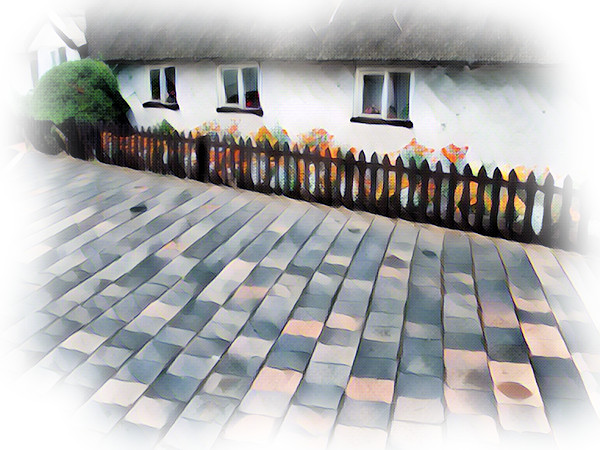Block Paving
Concrete blocks or clay bricks, no bigger than 300mm. Used in every sector, from patios and driveways to freight yards and airports. Also known as monoblock or cobblelock. The most versatile of modular pavings. This section looks at the wide range of pavers available and how they should be installed.
Block Paving - An Introduction to Block and Brick Paving
This page acts as the main link page for all the pages dealing with block paving, brick paviors, CBPs, monoblocks, cobblelock or whatever name is used in your part of the world for individual blocks of concrete or clay that are laid as a paving material.
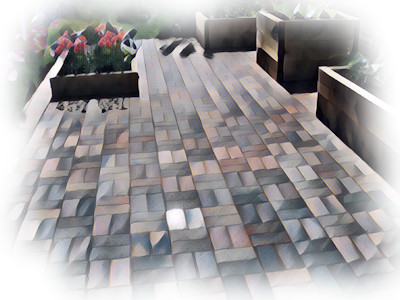
Block Paving - Choosing a Block or Brick Paver
With well over a thousand different products available, the range of blocks and bricks available for use on paving projects may seem daunting. However, the range can often be narrowed down considerable by giving thought to what’s required technically, aesthetically, and from a budget point of view. This page aims to guide the way through the main decisions to be made.
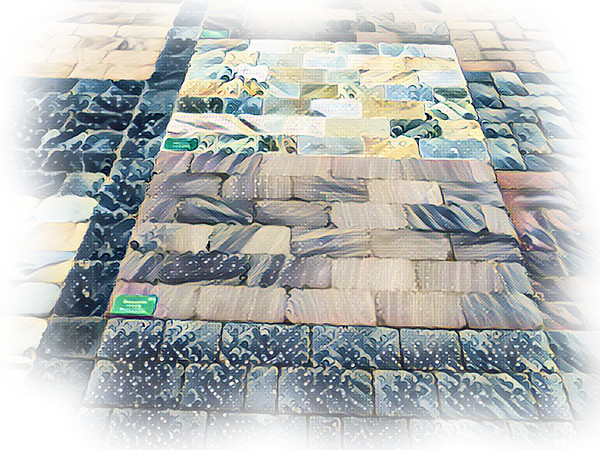
Laying Flexible Block Paving
Flexible or unbound block paving refers to blocks laid on a loose bed of sand or grit and jointed with a loose, dried sand. It is, by far, the most popular installation method for block paving used in Britain and Ireland. This page considers the details of how this construction method is used and the advantages it offers.
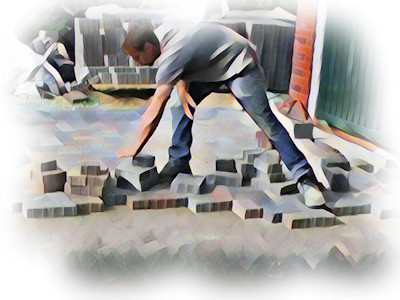
Step-by-Step Guide to Block Pavement Construction
This page follows the construction of a block paved driveway and illustrates the process, step-by-step, using photographs taken during the works.

Block Paving - Edge Courses
Edge courses are the blocks, bricks or other paver units used at the edge of a pavement. Sometimes referred to as Soldier Courses, their main function is to provide a robust restraint for the paving, to prevent it spreading and losing its load-bearing capability.
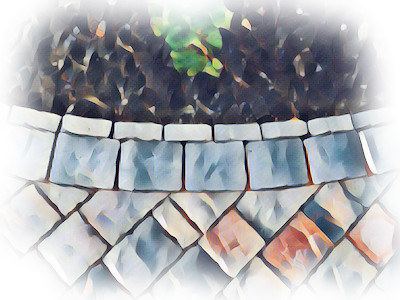
Edge Courses - First or Last?
Edge courses are essential to the construction of a sound block pavement. However, should they be constructed before placing the body blocks, or after placement? This page looks at the pros and cons of each method.

Block Paving - Alternative Edge Restraints
Consideration of alternative restraint methods and materials that may be used as an alternative to a concrete bedded edge course when laying block paving.

Screeding a bedding layer
Screeding is a method of constructing a well profiled bedding layer that flags or bricks or any other, regular thickness pavings can be directly laid onto with no further levelling.
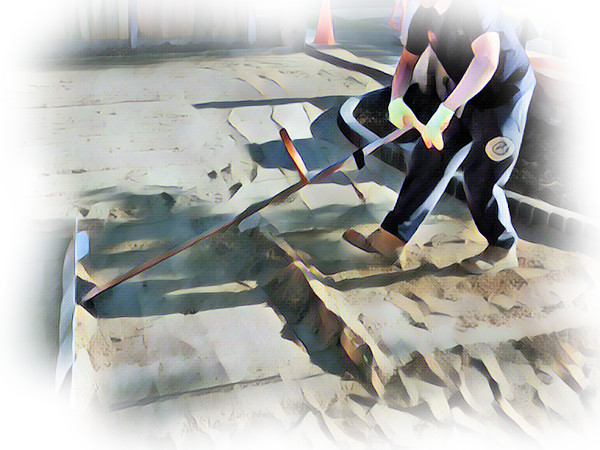
Setting Out Herringbone Paving
All block paving for areas carrying vehicular traffic, such as driveways, car parks or access roads, should be laid in a fully interlocked pattern. The most popular such patterns are 45° or 90° Herringbone patterns. On this page, diagrams will be used to show how such patterns may be set-up.
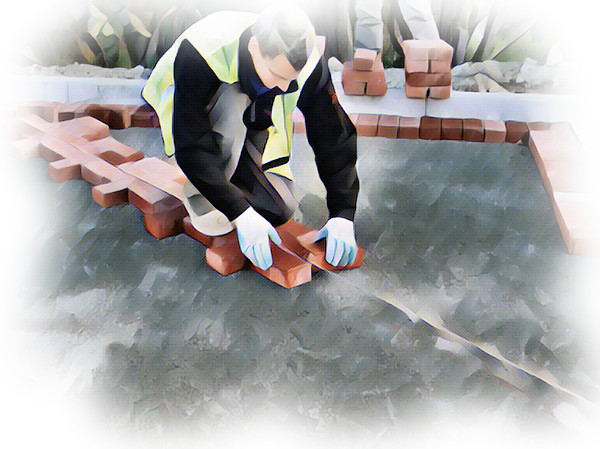
Setting Out 45° Herringbone
Here's a neat little trick that can be used to help establish a 45° herringbone layout that minimises wastage from off-cuts and ensures the pattern is parallel to a baseline. It works with both 50mm and 60mm pavers and needs just a single baseline, although it can also be used when working from a right angled (90°) corner.

Block paving construction flowchart
This page features an interactive flowchart that lists the key construction tasks, quality and compliance checks, and the sequence of operations for the installation of a conventional, flexible block pavement.
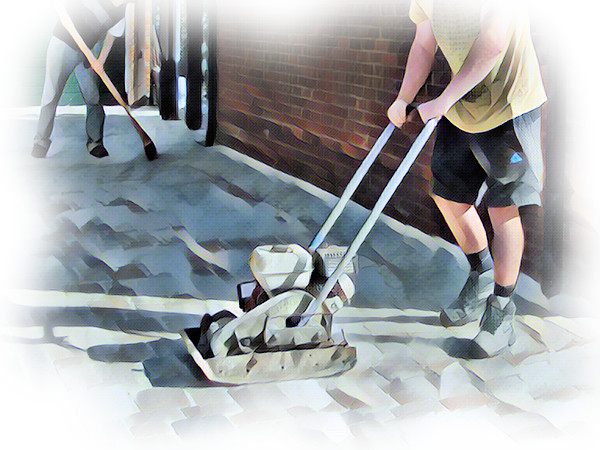
Block Paving - Cutting-in
Almost every block pavement will require some cutting-in to ensure blocks fit inside the designated perimeter. On some projects, it will be little more than creating half-blocks to enable a suitable bond pattern, but other projects could see every block against the edges needing to be cut or trimmed to suit. This page looks at the tools and techniques used to carry out this essential task.
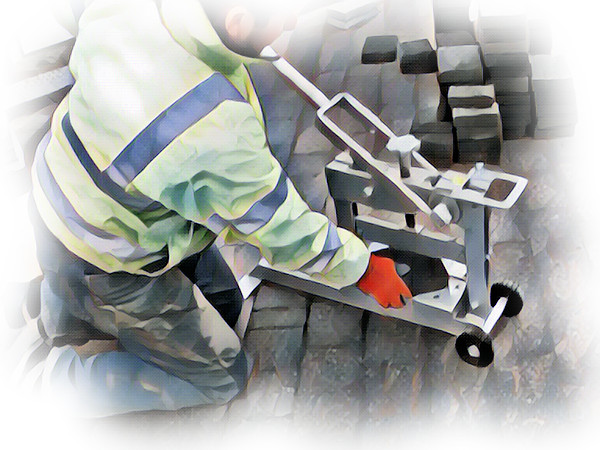
Block Paving - Detailing
Detailing could be described as the 'finishing touches' to a good block or brick pavement. It refers to the way corners are set out, or how the paving is laid around manholes, gullies or other fixed features.
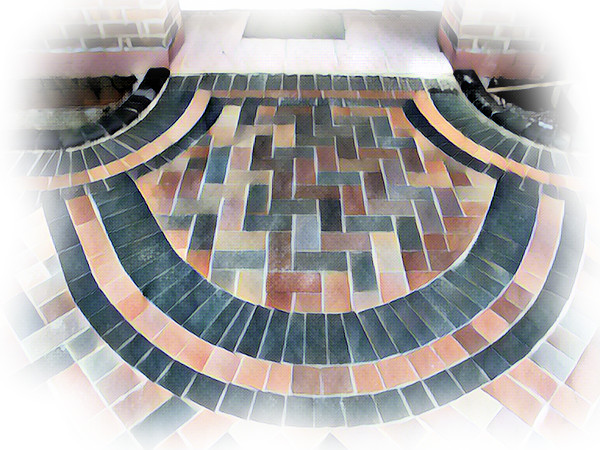
Making Mitres
Mitred joints are one of the key signs of a professional job. It's much easier to use butt-joints or cut blocks, kerbs, flags, setts or whatever is being used, so that they just " fill the gap ", but a mitred joint is the mark of a craftsman. It takes longer to complete, and it takes a lot more skill, but the end result is always worth the effort.

Using off-cuts
A quirky alternative to throwing away the offcuts that are generated when cutting in block paving. An iconic Irish round tower!

Block Paving - Rigid Block and Brick Pavements
Rigid or bound block paving refers to blocks or pavers laid on a bed of mortar, usually cement-based, and jointed with the same, to create a solid, inflexible pavement surface.
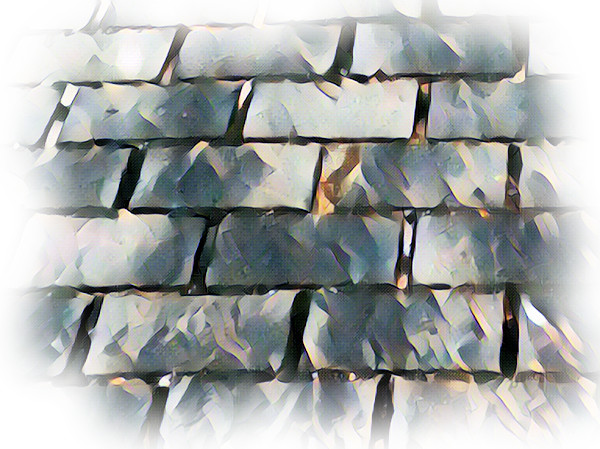
Block Paving - Pavement and Carriageway Design
This page details the procedure used to design a block or brick pavement for public highways, car parks, freight yards etc.

Matching Existing Concrete Block Paving
Matching existing block paving when an area needs to be extended is a regular problem that crops up via enquiries to the website, so this page looks at a few less obvious methods of resolving the issue.

Damp-looking Blocks
Some concrete blocks pavers never seem to dry out and remain damp long after all the neighbouring blocks have dried. Why does this happen, what causes it, and is it something worth worrying about?

Block Paving Over Base Courses
There are some projects where block paving is laid over a seemingly inflexible or rigid base course, rather than a flexible sub-base. The most common example is that of block paved highways, usually housing estate cul-de-sacs, retail parks, and similar low-speed vehicular areas.

Machine Laying of Block Paving with Brett Paving
Machine Laid Block Paving is the semi-automated method of installing large areas of flexible block paving in minimal time with reduced labour requirement, all brought about by the use of lifting machines with specially-developed "grabs" that place a square metre or more of paving at a time in a pre-defined pattern.
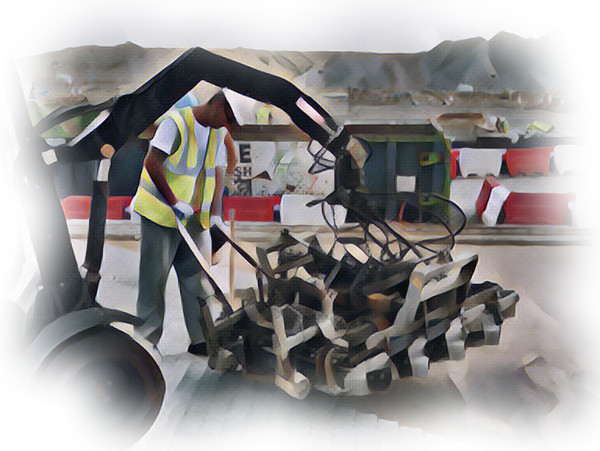
Clay Pavers
Clay pavers are the original form of block paving, or brick paving as it was formerly known. This page looks at the types of pavers available, the laying technique options, and a little bit of the technical information that makes clay pavers unique amongst paving materials, as well as providing a gallery of popular pavers.
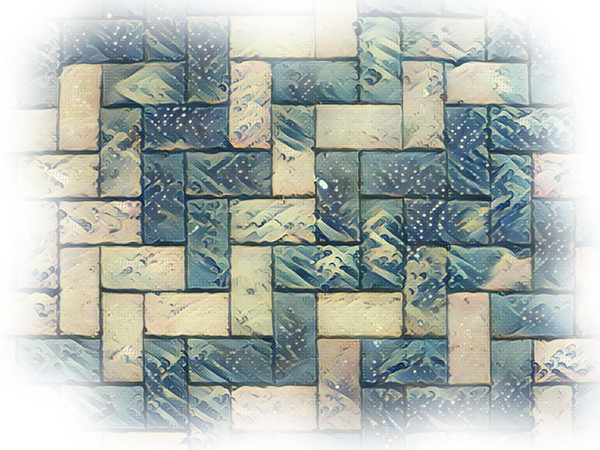
Clay Paving - Southport Pavers
There are towns throughout Britain and Ireland that enjoy paving that is a little bit special, found only in that one location and possibly one or two others. Southport Pavers are such a thing: blue clay tiles that originate in North Wales but found their biggest market in the Lancashire seaside town. This page looks at their uses.
